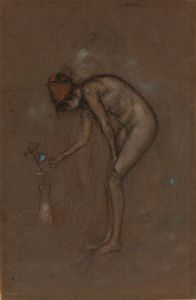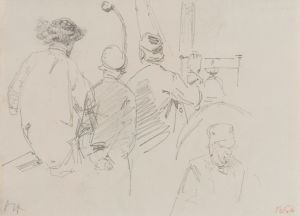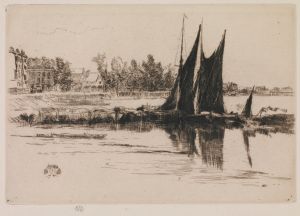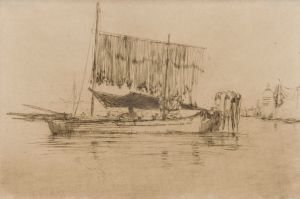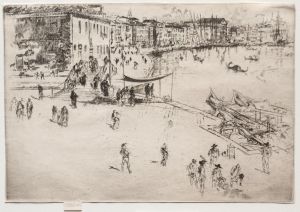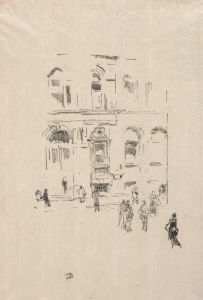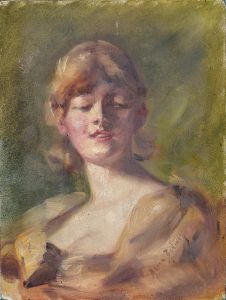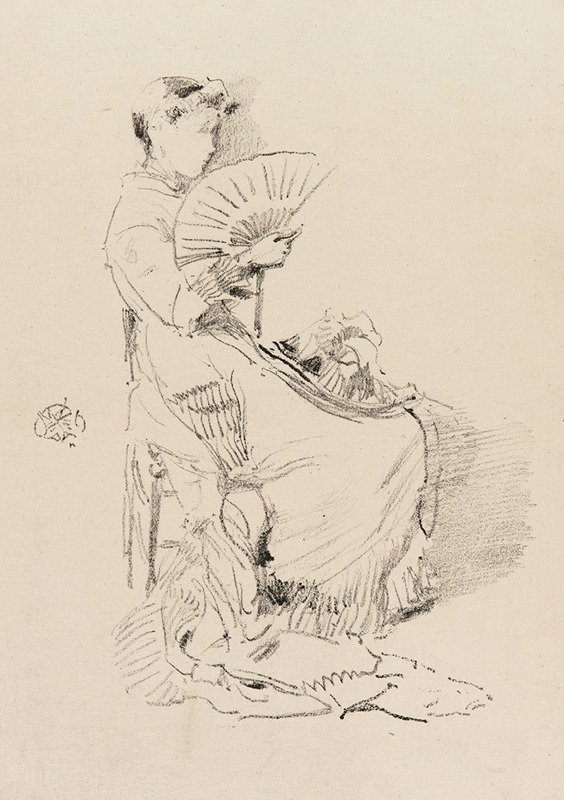
The Fan
A hand-painted replica of James Abbott McNeill Whistler’s masterpiece The Fan, meticulously crafted by professional artists to capture the true essence of the original. Each piece is created with museum-quality canvas and rare mineral pigments, carefully painted by experienced artists with delicate brushstrokes and rich, layered colors to perfectly recreate the texture of the original artwork. Unlike machine-printed reproductions, this hand-painted version brings the painting to life, infused with the artist’s emotions and skill in every stroke. Whether for personal collection or home decoration, it instantly elevates the artistic atmosphere of any space.
James Abbott McNeill Whistler, an American artist active during the late 19th century, is renowned for his contributions to the Aesthetic Movement, which emphasized art for art's sake. One of his notable works is "The Fan," a painting that exemplifies his unique style and artistic philosophy. Whistler's approach often involved a harmonious blend of color and form, and "The Fan" is a testament to this aesthetic.
"The Fan" was created during a period when Whistler was deeply influenced by Japanese art and design, a trend known as Japonisme that swept through Europe in the late 19th century. This influence is evident in the composition and subject matter of the painting. Whistler was known for his ability to integrate elements of Japanese art into his work, which often included the use of asymmetrical compositions and a focus on delicate, refined details.
In "The Fan," Whistler employs a subtle palette, focusing on muted tones that create a sense of tranquility and elegance. The painting features a woman holding a fan, a common motif in Whistler's work, which he used to explore themes of femininity and beauty. The fan itself is depicted with intricate detail, showcasing Whistler's skill in rendering textures and patterns. This attention to detail is a hallmark of Whistler's style, reflecting his belief in the importance of craftsmanship and precision in art.
Whistler's technique in "The Fan" involves the use of thin layers of paint, which he applied with great care to achieve a smooth, almost ethereal surface. This method allowed him to create subtle gradations of color and light, enhancing the overall harmony of the composition. The painting's background is often understated, drawing attention to the central figure and her fan, and emphasizing the simplicity and elegance that Whistler sought to convey.
The influence of Japanese art is also apparent in the way Whistler handles space and perspective in "The Fan." Rather than adhering to the traditional Western approach to perspective, Whistler adopts a more flattened, two-dimensional style that is characteristic of Japanese prints. This approach allows him to focus on the decorative qualities of the painting, aligning with the principles of the Aesthetic Movement.
Whistler's work, including "The Fan," was not always well-received by critics during his lifetime. However, his innovative approach to composition and his emphasis on beauty and harmony have since been recognized as significant contributions to the development of modern art. Today, "The Fan" is appreciated for its delicate beauty and its role in illustrating Whistler's artistic vision.
Overall, "The Fan" by James Abbott McNeill Whistler is a fine example of the artist's ability to blend influences from different cultures and artistic traditions. It reflects his commitment to creating art that prioritizes aesthetic experience over narrative content, a philosophy that has left a lasting impact on the art world.










